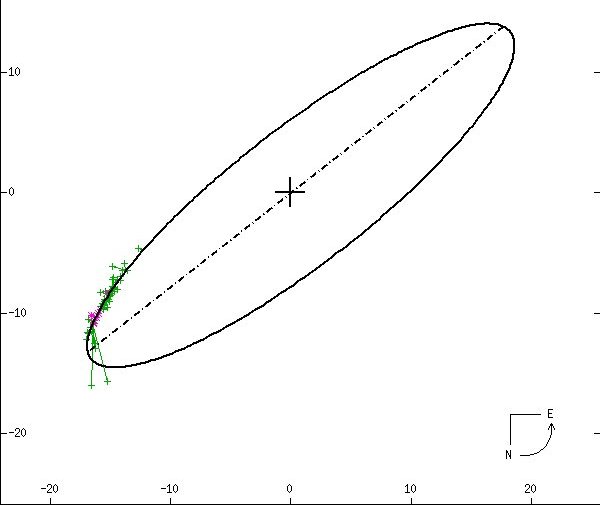
 |
A dim, 10th magnitude red dwarf companion, Theta Persei B, orbits much brighter Theta-A, the scale in seconds of arc. An ellipse fitted to the short segment of data reveals a period of almost 3000 years and an average separation of just under 250 Astronomical Units. A tilt to the orbital plane of 75 degrees relative to the plane of the sky distorts the curve from what would be seen face-on and makes the orbit appear much more flattened than it really is. The arrow in the lower right corner shows the direction of motion. The stars were closest early in the seventeenth century and are now actually getting farther apart even though, because of the orbital tilt, it does not look like it. In spite of the small section of the path observed, the orbit appears to be remarkably accurate. From the Sixth Catalog of Orbits of Visual Binary Stars, W. I. Hartkopf and B. D. Mason, US Naval Observatory Double Star Catalog, 2006. |